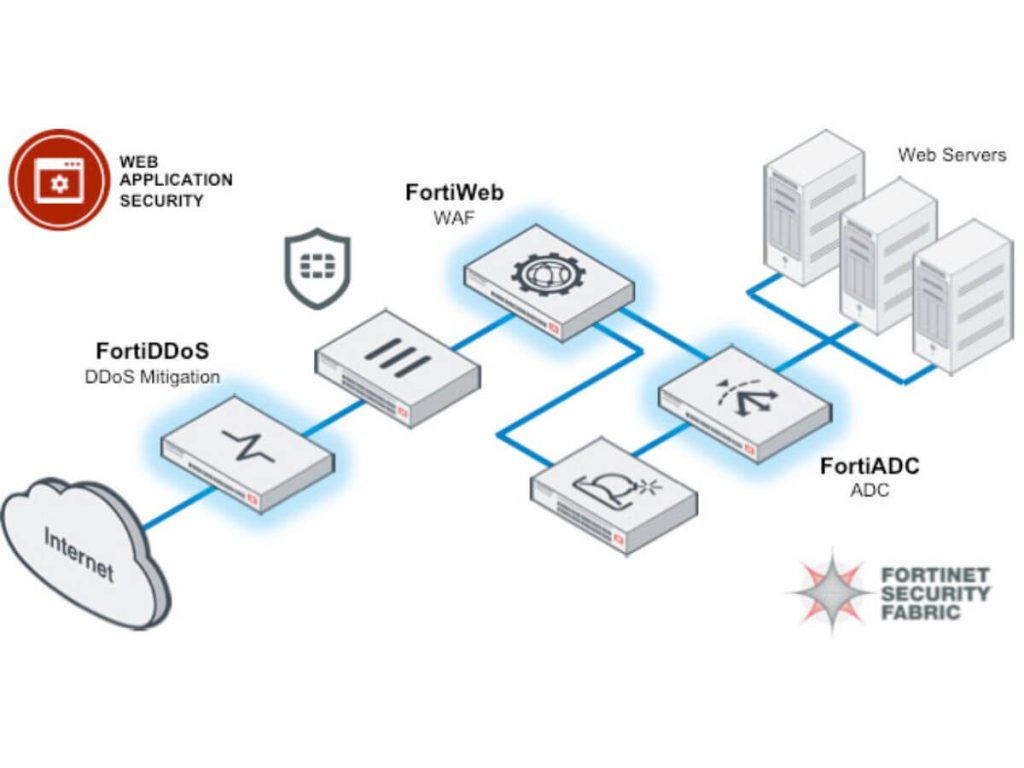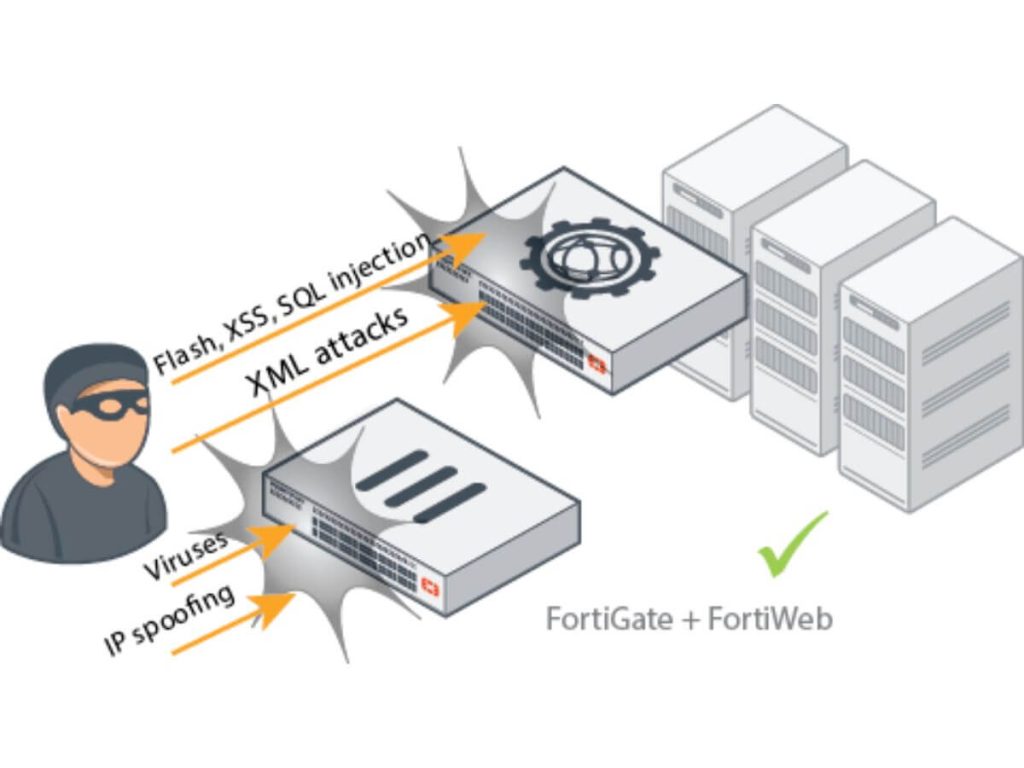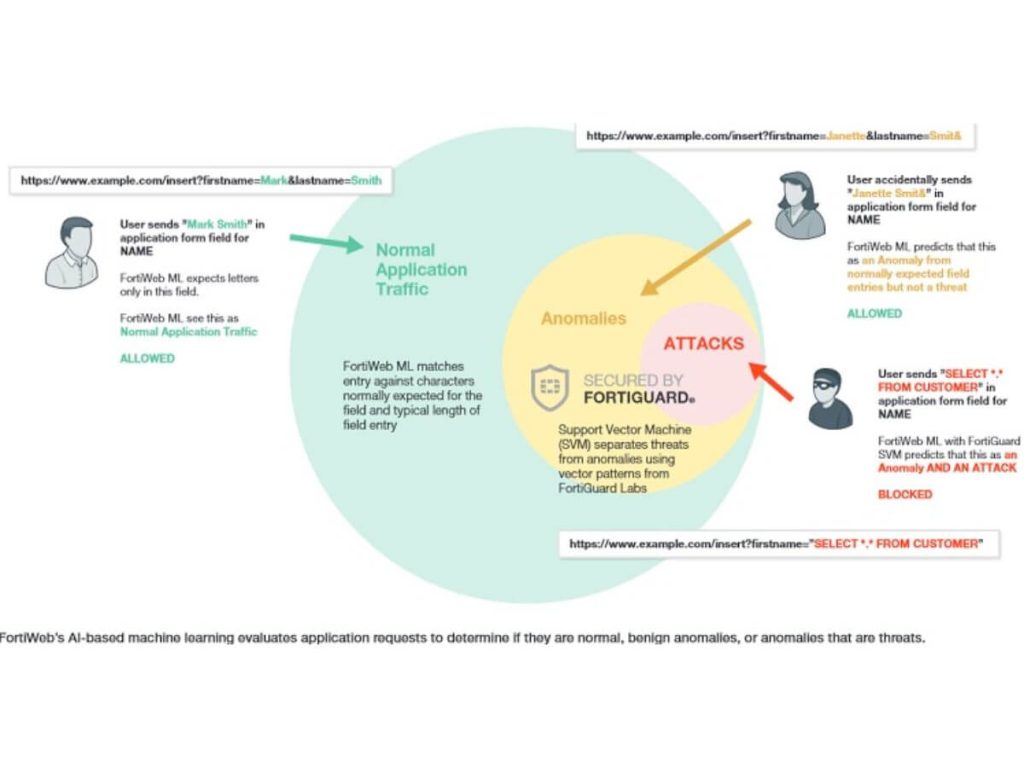
Image via fortinet.com
When it comes to protecting your online assets, having the right security measures in place is crucial. Two commonly used tools for safeguarding your cyber security solutions are Web Application Firewall (WAF) and firewall. While both are essential for ensuring the security of your digital assets, they have distinct functions and features that set them apart.
Differences Between a WAF and a Firewall
WAF vs firewall: one key difference between a WAF and a firewall lies in their approach to filtering traffic. While network firewalls examine packets of data based on protocol, port numbers, and IP addresses, WAFs inspect HTTP requests at the application layer to identify and filter out malicious traffic targeted at specific vulnerabilities within web applications.
Which Layer Does a WAF and a Firewall Operate At?
Firewalls control network traffic flow specifically at Layer 3 or 4 of the OSI model. It’s all about managing data packets based on IP addresses or ports. In contrast, web application firewalls situate themselves higher on this tier, operating predominantly at Layer 7 or the application layer. This placement enables them to analyze HTTP/HTTPS traffic, scrutinizing content deeply.
What Are These Specialized Defenses Used For?
A network firewall protects a private network connected to the internet and serves as your first line of defense—its job centers on network-layer traffic by barring unauthorized access. On the other hand, a WAF protects web applications by monitoring and filtering their HTTP traffic between a web app and the Internet–excelling most at fending off application-layer attacks such as SQL injection, cross-site scripting, and other OWASP top 10 application security threats.
What Do These Security Measures Not Protect Against?
Both WAFs and conventional firewalls have limitations—they’re not an all-protecting shield against cybersecurity threats. While firewalls regulate internet connection access and safeguard internal networks from unauthorized intrusion attempts efficiently, they struggle against sophisticated application-layer attacks as they lack deep traffic examination capacity.
Read more: Function of Firewall.
Similarly, despite a WAF’s proficiency in thwarting application-layer threats due to its contemplative packet analysis capability, it doesn’t necessarily protect against malware or spam emails—issues often covered by endpoint security solutions or email security gateways respectively.
Do I Need Both a WAF and a Firewall?

Image via fortinet.com
While both defend distinct layers of your network infrastructure, they work together seamlessly for comprehensive coverage. The firewall excels in securing data transmission across the entire network level, whereas WAF primarily protects applications at individual levels.
Having only one doesn’t negate the need for another; it’s not ‘either-or’, but rather ‘both-and’. Think about it, like having both locks and alarms installed at home—you wouldn’t want to choose between them when each offers you different types of protection.
While traditional firewalls shield your network broadly from unauthorized invasion attempts, they are no match against the sophisticated malicious attacks targeting specific application vulnerabilities. That’s why having WAF in addition to traditional firewalls enhances web application security by adding another layer of preventive measures against increasingly diverse threats.
Remember, in the ever-evolving field of information security, layered defense tactics are key to ensuring comprehensive protection.
The Right Cyber Security Solution for Your Business Needs

Image via fortinet.com
Understanding these key differences is vital when crafting a robust cybersecurity strategy for your organization or website. By leveraging both firewalls and WAFs strategically in your security infrastructure, you can significantly enhance your defense capabilities against an array of cyber threats.
While it might seem redundant to have both a WAF and a firewall, their distinct functions make them indispensable when it comes to safeguarding your digital assets. By working together in harmony, they provide robust protection against an evolving landscape of cyber threats.
One effective way to safeguard your business from cyber threats is by partnering with Spectrum Edge, a reputable Fortinet distributor in Malaysia. We offer a range of products and services designed to keep businesses safe from evolving digital risks.